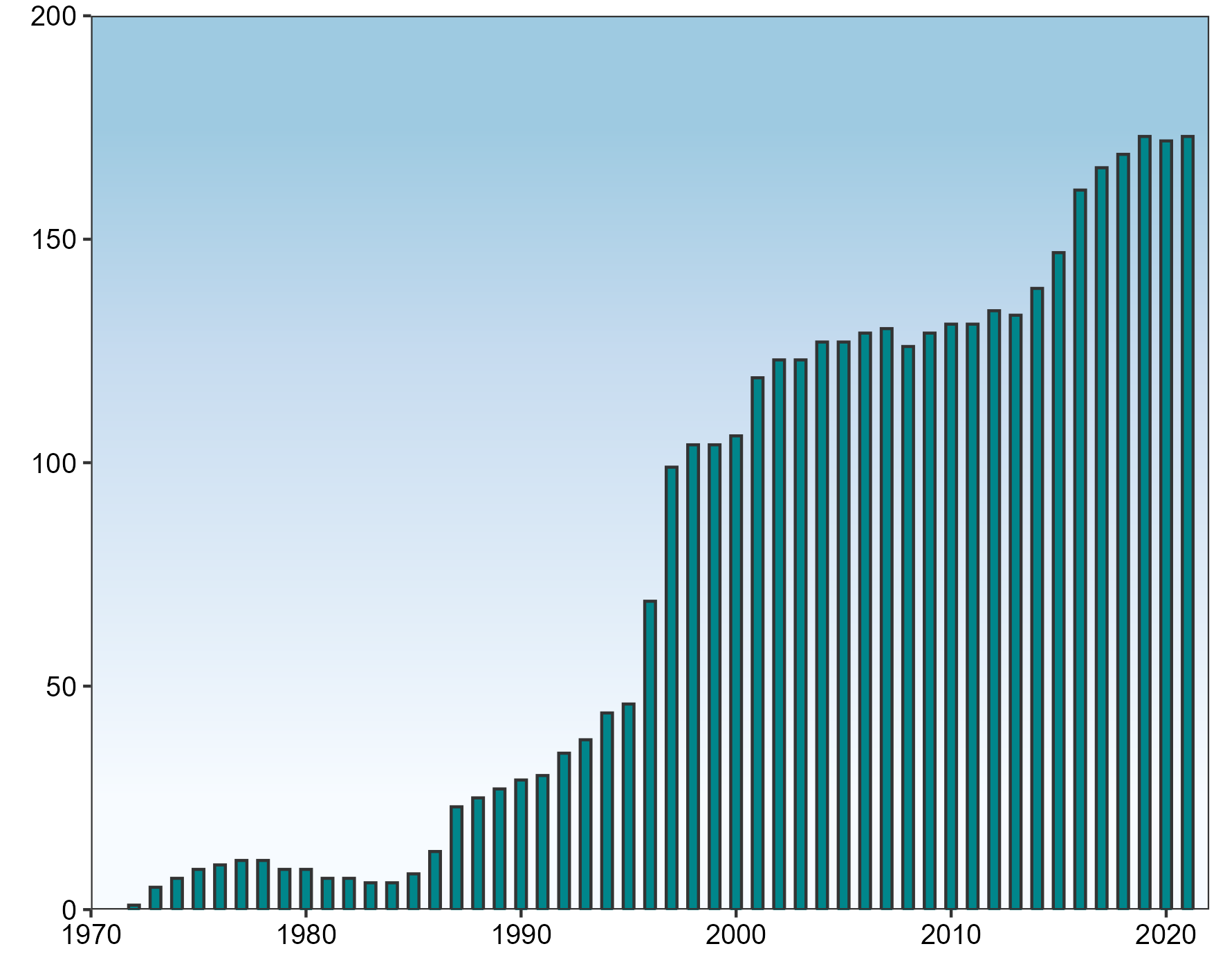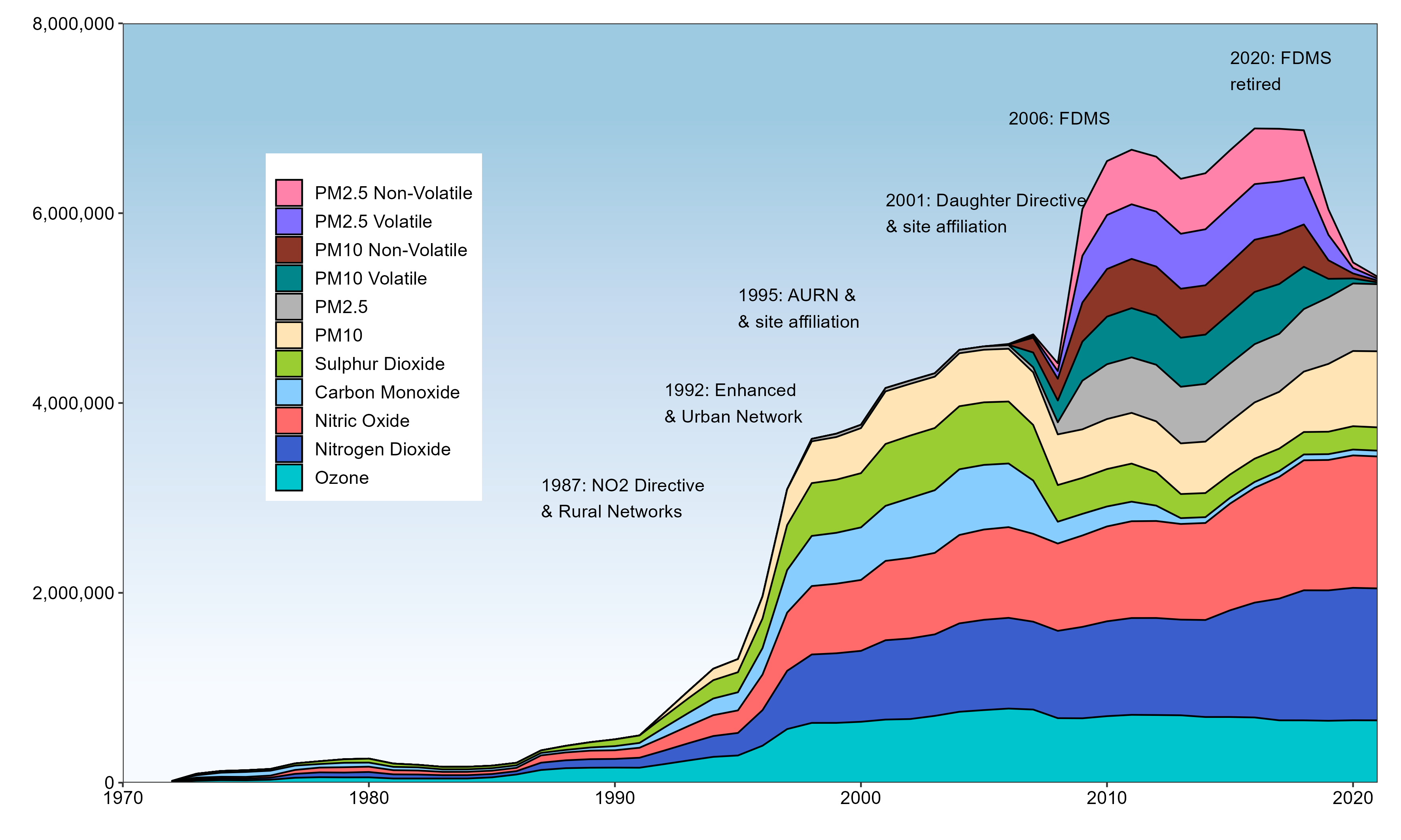Brief history
Air pollution and its effects on population health became an increasingly serious problem from the Industrial Revolution, as our reliance and ever-increasing need for energy relied upon the burning of fossil fuels. As a consequence of this, it was not uncommon that unfavourable weather conditions could promote the formation of urban smogs. Historic sources suggest that particularly bad smog events caused thousands of the premature deaths of susceptible people. Recent history depicts the infamous smogs of the 1950s and 60s, which finally precipitated both vociferous public concern and decisive Government action regarding air pollution.
This resulted in the UK Government introducing its first Clean Air Act in 1956. In 1961 the UK established the world's first co-ordinated national air pollution monitoring network, called the National Survey. It monitored black smoke and sulphur dioxide at around 1200 sites in the UK. Over the years, several further pieces of legislation and additional monitoring networks were introduced to combat and measure air quality in the UK.
The National Survey and its early predecessors have been monitoring air pollution for over 60 years. The monitoring data have shown trends such as the dramatic decline in both black smoke and sulphur dioxide concentrations due to the introduction of cleaner fuels and technologies, and successful legislation.
Within the UK, focus has shifted progressively to the monitoring of pollutants generated (directly or indirectly) from vehicular emissions, which include ozone, nitrogen dioxide and fine particulate matter. In 1987, this led to the UK establishing an automatic urban monitoring network, to monitor compliance with the emerging EC Directive limit values on air quality. Following commitments by the UK Government to expand urban monitoring in the UK and improve public availability of air quality information, this network subsequently expanded.
In 1992, the then Department of Environment established an Enhanced Urban Network (EUN), and in 1995, all statutory and other urban monitoring was consolidated into one comprehensive programme. During the following five years, over 50 local authority sites were integrated into the resulting network, including 14 of the London Air Quality Monitoring Network sites. In 1998, the previously separate UK urban and rural automatic networks were combined to form the current Automatic Urban and Rural Network (AURN), which comprised of over 170 sites across the UK at the end of 2021.
Other notable changes in the history of the AURN:
- Reporting of both volatile and non-volatile particulate components commenced in 2006 with the Filter Dynamic Measurement System (FDMS) instruments. These instruments ran through to 2020 when they were retired.
- The number of sulphur dioxide and carbon monoxide monitors could be reduced from 2008 onwards due to the successful reduction of ambient concentrations of these pollutants across the UK.
The expansion and changes in automatic monitoring are clearly illustrated in Figures 1 and 2, which show the increase in the number of sites and the total hourly measurements made since the commencement of automatic air quality monitoring in the UK, respectively.
Figure 1: Number of AURN funded automatic measurement stations in the UK

Figure 2: The number of hourly measurements made every year has increased dramatically for all pollutants in the automatic monitoring networks (O3, NO2, CO, SO2 and PM10) and for other UK Strategy pollutants

